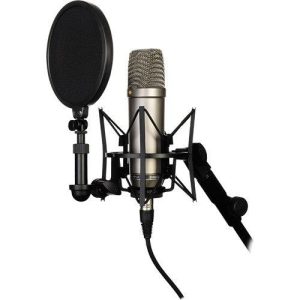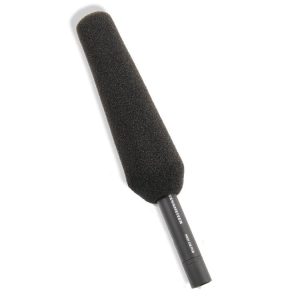What is ADR?
—
Overview
ADR (Automated Dialogue Replacement) is the process of re-recording audio in a controlled
environment, such as the ADR room (SCA B107) on campus. ADR is used to improve audio quality
or make changes to the dialogue. The ADR room is also where voiceover is recorded. Voiceover is
different from ADR, but you will still watch a timecoded version of the film and playback scenes
for the actor to get the right timing and performance.
Microphones
In the ADR room, there are multiple microphones you can
use. One is a large diaphragm condenser microphone.
This microphone is great for voiceover. If you plan on
recording voiceover for your animation projects this is the
ideal microphone to use.

The other is a 416 shotgun or boom microphone which is
good for mimicking sound recorded on set. ADR can be
controversial because it is challenging to replicate what the
environment sounded like on the day the dialogue was
recorded and successfully implement ADR in your film
without it sounding unnatural in comparison to the other
dialogue. One important step that is taken to help the ADR
sound more similar to the original recording is to use the
416, which is a common boom microphone that is used on
set during production.

The ADR facility at USC is divided into three rooms:
ADR Stage: this is where the actor will perform. There is a TV in the room so the actor can watch
the scene back and listen to the original production track and match their performance.
Timecode will be burned in the picture, which makes it easier to identify the exact moment
where the cue takes place.
The actor wears headphones which allows them to hear the original dialogue that is being
replaced and it doesn’t interfere with the new ADR lines being recorded. The headphones also
allow the actor to hear the engineer who is on the other side of the ADR stage when they
communicate with them.
Control Room: this room looks into the ADR stage and is where the engineer or qualified sound
technician (QST) operates the recording equipment. Here they play back the scene as many times
as needed. They also add three distinct beeps before the line that is getting replaced so the actor
gets into a rhythm. Then the line is recorded and can be re-recorded as needed until the new
performance accurately matches the picture.
Machine Room: this is where the computer and other hardware are stored.
ADR Rules
- You are only allowed to book 4 hours in a room each day
- You can make a reservation up to 10 days in advance
- No food or drinks are allowed in the room
- Do not unplug or remove anything from the room
How to Book the ADR Room?
If you need to record voiceover for your animation projects email the Animation Sound Support
Specialist Amaya Cranston, acransto@usc.edu. In your email please include the date and
preferred time you would like to record. Additionally, please CC your animation professor when
making your request so we can verify your request is for an SCA approved project. Amaya will
then reply to confirm the day and time of your ADR session based on the Sound Department’s
availability.

